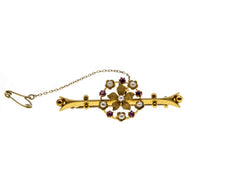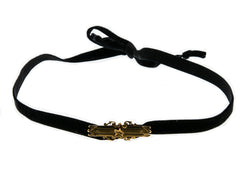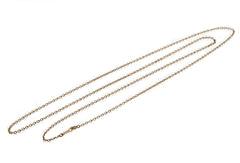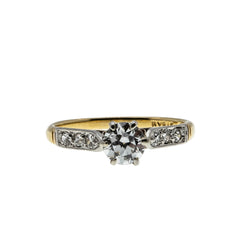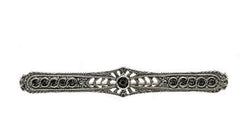Reserve For Client : Blue Moon - Edwardian French Natural Ceylon Moonstone Cabochon 'Old European Cut" Diamond Cluster Ring (EDR097)
Rarities Antique Jewelry
Reserve For Client : Blue Moon - Edwardian French Natural Ceylon Moonstone Cabochon 'Old European Cut' Diamond Cluster Ring. This stunning ring is crafted from 14K yellow gold and white gold. The ring features one natural oval cut cabochon Ceylon moonstone, 22 natural 'Old European Cut 'diamonds, Edwardian era styling, and high quality craftsmanship. The gallery on this ring is expertly bezel-set with the most beautiful clear moonstone, displaying a wonderful colour play of blue, in different light intensities. The precious moonstone is surrounded by a halo of glowing hand-cut diamonds, adding a touch more sparkle to the moonstone. The face of the gallery is crafted in white gold, whilst the bottom of the gallery is crafted in yellow gold. The band is crafted in yellow gold , it is tapered, smooth and polished, which allows for a comfortable fit, and easy sizing. This Edwardian era beauty is truly a ring to be cherished and enjoyed for many years to come.
Note: Contemporary appraisals do not reflect the value of antique and vintage jewelry. This ring should be insured for $5000.00 (Tax Excluded)
History: Both the Romans and the Greeks associated moonstone with their lunar deities. The Roman natural historian, Pliny, coined the name of this gemstone when he wrote that moonstone's shimmery appearance shifted with the phases of the moon—a belief that held until well after the sixteenth century.
Ceylon (Sri Lankan) moonstone has a history of intertwined with ancient architecture and cultural traditions, notably as the "sandakada pahana" or semicular stone slab found at the base of temple staircases, symbolizing the Buddhist cycle of rebirth. Valued for its luminous, often blue, sheen, it has been mined in Sri Lanka for centuries using traditional, eco-friendly methods, with Sri Lanka now being a leading global source for high-quality moonstones. Its beauty and mystical allure have also made it a popular gemstone in jewelry and a symbol of feminine energy and intuition across various cultures.
The earliest diamonds were found in India in 4th century BC, although the youngest of these deposits were formed 900 million years ago. A majority of these early stones were transported along the network of trade routes that connected India and China, commonly known as the Silk Road.
The old European cut diamond became very popular around the late 1800s and is the predecessor of today's modern round brilliant cut. This antique cut has once again become a favorite due to the features of its cutting style and the fact that no two stones will ever be cut exactly alike.
The Old European Cut, a historic diamond cut, evolved in Europe and gained popularity between 1890 and 1930, serving as a precursor to the modern Round Brilliant cut. It's characterized by its round shape, high crown, and a small table, offering a unique charm due to being hand-cut. This cut was especially popular during the Edwardian and Art Deco periods.
Holding a piece of jewelry that contains an antique diamond feels like you’re handling ancient treasure. And for good reason! While modern diamonds are mined and cut by the millions each year, a limited number of Old Mine and Old European Cut diamonds exist in the market today.
These precursors to our modern day round brilliant cuts offer a distinct visual experience from the way their hand cut facets play with light. The facets are wider and more geometric, resulting in pops of sparkle instead of the disco ball dazzle we see in modern diamonds. They’re perfectly imperfect, and that’s what gives them their charm.
Old European cut diamonds are cut in a style developed in Europe and popular from 1890 to 1930. If you find an antique ring with a round diamond from this period, it very likely features an old European cut, often abbreviated as "OEC."
Earlier diamonds typically received what is known as an "old mine cut," while later ones were cut as the well-known modern round brilliant.
Machine cutting wasn't available when old European-cut diamonds were popular. Each one was cut by hand. While you might think this means superior craftsmanship, it really just means that each one is unique.
While the old European cut was once the most popular diamond cut, its heyday is long past. The age of these diamonds makes them antiques. Of course, this gives them an allure that modern diamonds won't have.
There simply aren't very many of them, so few appear on the market at any given time.
Most old European-cut diamonds were cut to retain more weight, rather than optimize appearance. Because of the shape of rough diamonds, the end result was a deep cut with a high crown and small table. These old diamonds also often had a flat facet instead of a tip at the culet. This not only protected the bottom from chipping but also gave them a distinctive look. You can see the culet as a circle in the middle of the table.
The higher depth and steeper crown angles allow these diamonds to show off more fire. This effect is similar to a prism creating rainbows from sunlight. As light moves through the diamond, it splits into its component colors, each curving a different amount. The colors then reflect back to your eye. Since the light travels farther in a deeper diamond, you get more fire. However, this greater depth also means that there's more light leakage in an old European cut. These diamonds simply won't look as bright as modern round brilliants. They will show less white light.
There's something perfectly-imperfect about every old Euro cut. Their hand-cut character makes each diamond one-of-a-kind. Another upside to old European cuts? They're always an ethical choice.
In 1953, GIA formally created its diamond grading system, known as the 4 C's. The 4 Cs of diamond quality are the universally recognized diamond grading system still to be used today. 1n 1955, GIA presented its first diamond grading reports, which became the hallmark of grading reports in the diamond industry. Before this time in antiquity clients did not care about diamond grading. It was based more so on the size of the diamonds ( according to budget) , style, and sentiment. This ring is a wonderful rare example of the Edwardian era, just beautiful!
Gold was generally used for a couple thousand years solely to create things such as jewelry and idols for worship. This was until around 1500 BC when the ancient empire of Egypt, which benefited greatly from its gold-bearing region, Nubia, made gold the first official medium of exchange for international trade.
White gold emerged in the 20th century as a popular alternative to platinum, initially driven by its affordability and similar aesthetic appeal. While platinum was expensive and sometimes scarce, white gold offered a more accessible option while still providing a luxurious look, particularly for engagement rings and wedding bands. Its rise in popularity also coincided with the Edwardian and Art Deco movement, where its sleek, modern design complemented the era's aesthetics.
The Edwardian era corresponds to the reign of King Edward VII in Great Britain, whose short-lived governance (1901-1910) followed Victoria's long reign and preceded the modern House of Windsor in England. The "Edwardian" style broadly encompasses the years of 1901 through to 1919.
Measurements: Face of the Ring 15.50 mm x 13.00 mm
Stone Size: Moonstone (Ceylon) 4.25 carats Clarity: L1 Diamonds (Old European Cut) .28 carats Clarity SI Colour G/H
Weight: 3.70 grams
Ring Size: 8 1/2 Note: Easy to size.
Condition: Excellent
Origin: France
Date: Circa 1910











